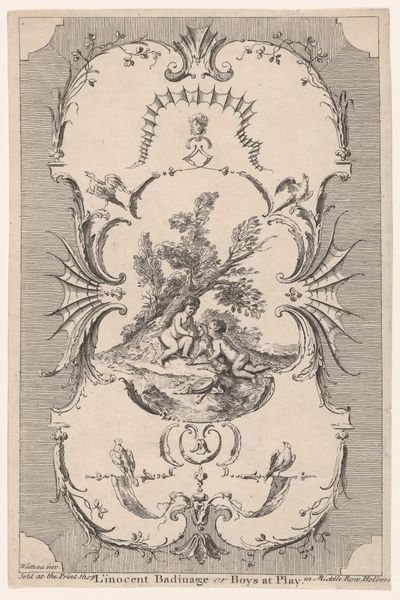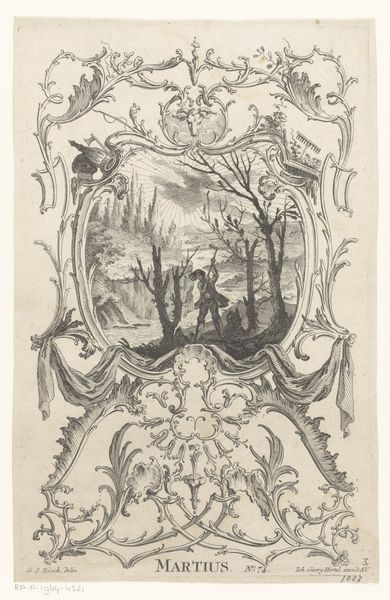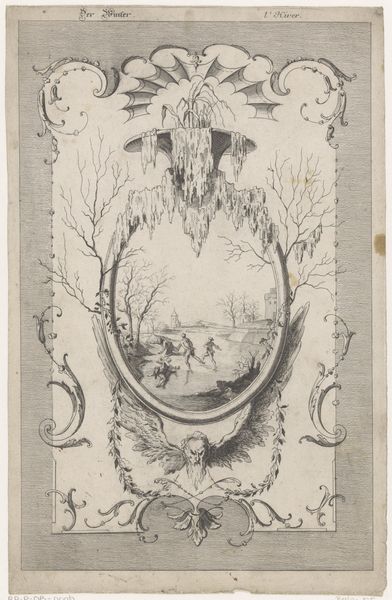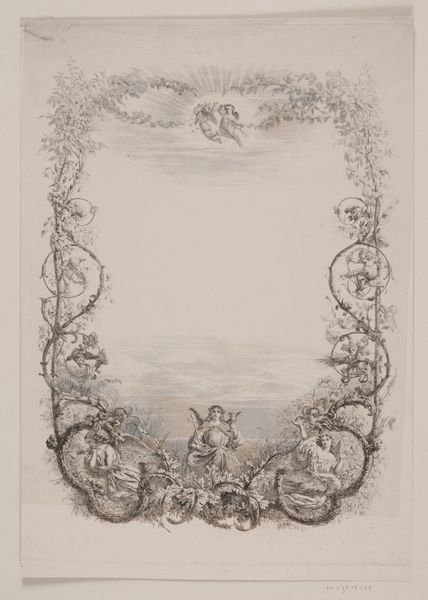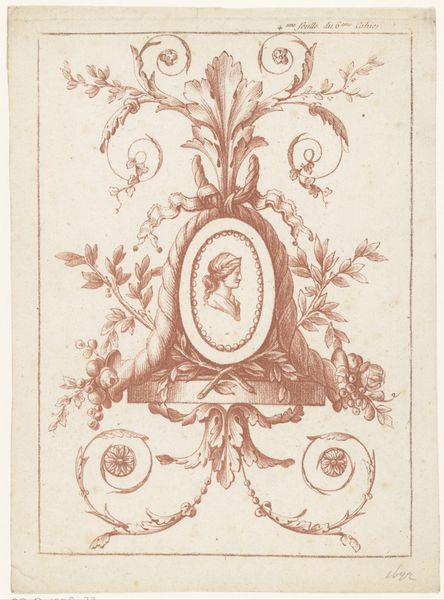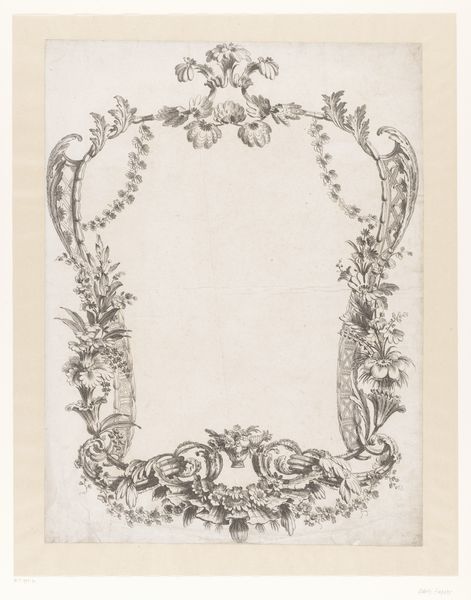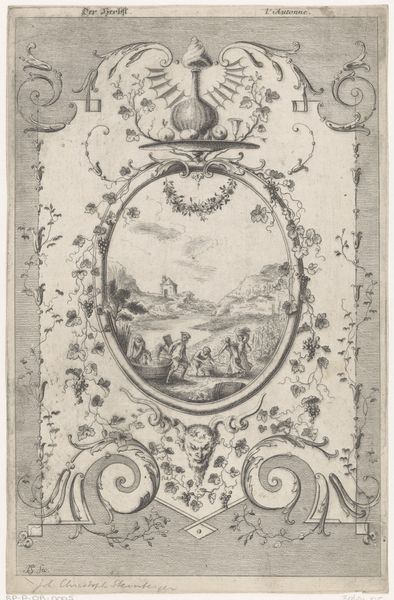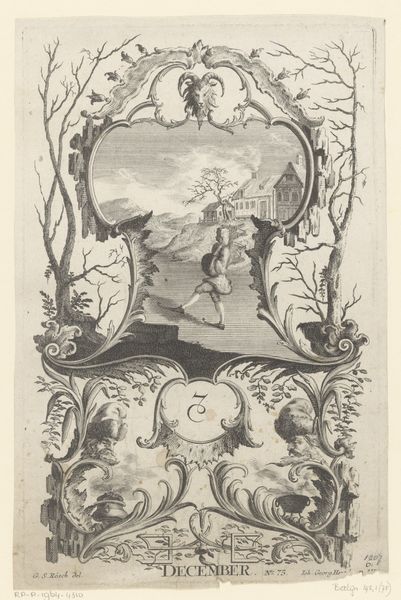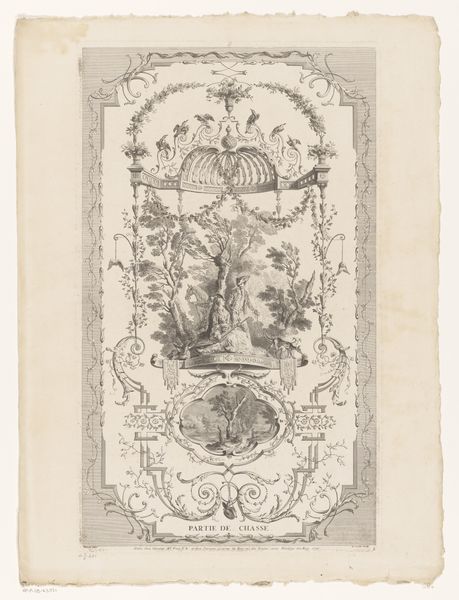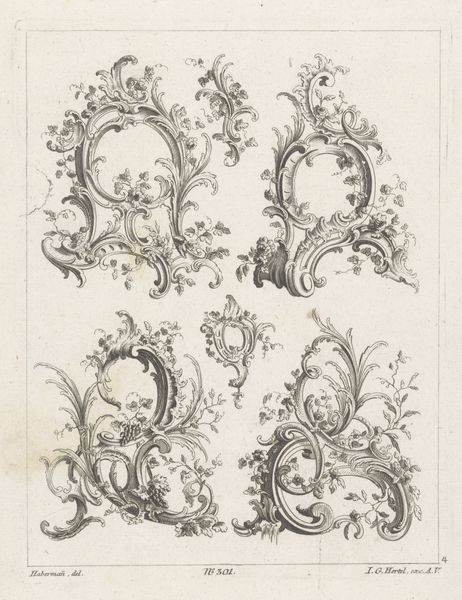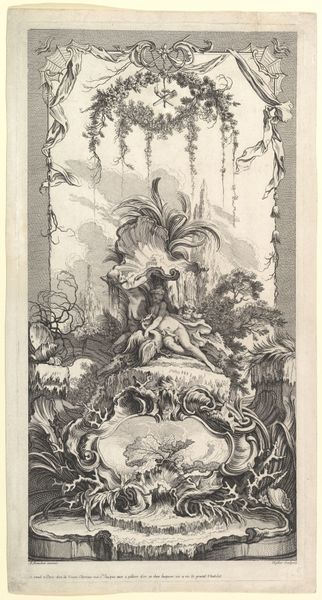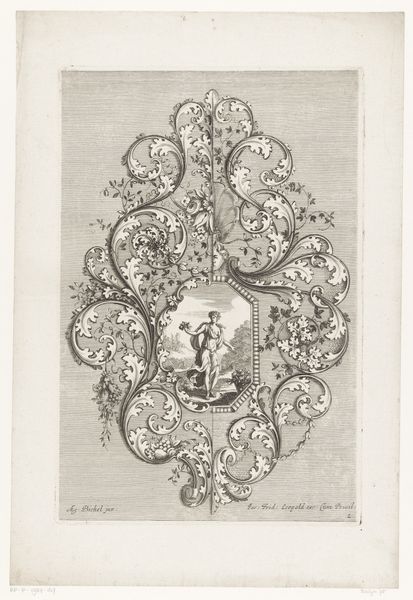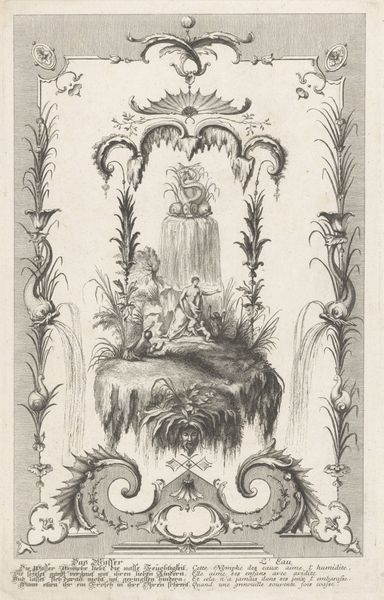
print, engraving
#
baroque
# print
#
landscape
#
figuration
#
history-painting
#
engraving
Dimensions: height 303 mm, width 198 mm
Copyright: Rijks Museum: Open Domain
Curator: Looking at this engraving, I'm immediately struck by its elaborate and somewhat overwhelming composition. The level of detail is fascinating. Editor: Indeed. What you’re observing is Johann Christoph Steinberger’s “Zomer,” or “Summer,” dating sometime between 1708 and 1727. It’s a baroque print, currently held at the Rijksmuseum. Curator: Baroque, absolutely. The ornate frame practically swallows the central image. Speaking of which, it depicts laborers harvesting wheat. What's the social context here? Was this common imagery at the time? Editor: Very much so. The representation of agricultural labor in art gained traction, often idealizing the lives of the working class to legitimize social hierarchies. It reflects both an aesthetic fascination with landscape and an ideological investment in maintaining the status quo. Prints like these disseminated ideas to a broad public. Curator: I see your point about idealization, but if we focus on just the formal elements, I notice the meticulous engraving creates distinct textures, the smooth skin of the figures contrasted with the rough stubble of the field. The line work contributes greatly to the sense of depth, particularly in the receding landscape beyond the harvesters. And that stylized floral border – almost claustrophobic. Editor: True. It’s not just the laborers in the fields but also the entire agrarian society encapsulated within the design. Note the presence of what appears to be sunbeams—an assertion of divine favor upon these endeavors, implying not just human toil but a blessing from above. Curator: Precisely, the use of the sun as a motif, almost deifying labor. This is reinforced structurally by framing it around a human visage, so the land’s bounty literally shines down, bestowing richness on all. The artist creates such complexity of depth. Editor: The power of such images comes from how it entwines daily labor with social and even cosmic order. So next time you enjoy some warm bread, reflect that images like “Zomer” played a role in shaping its social and cultural narrative. Curator: A clever, layered combination of formal artistry and cultural message indeed—rather different from the bucolic experience suggested at first sight.
Comments
No comments
Be the first to comment and join the conversation on the ultimate creative platform.
